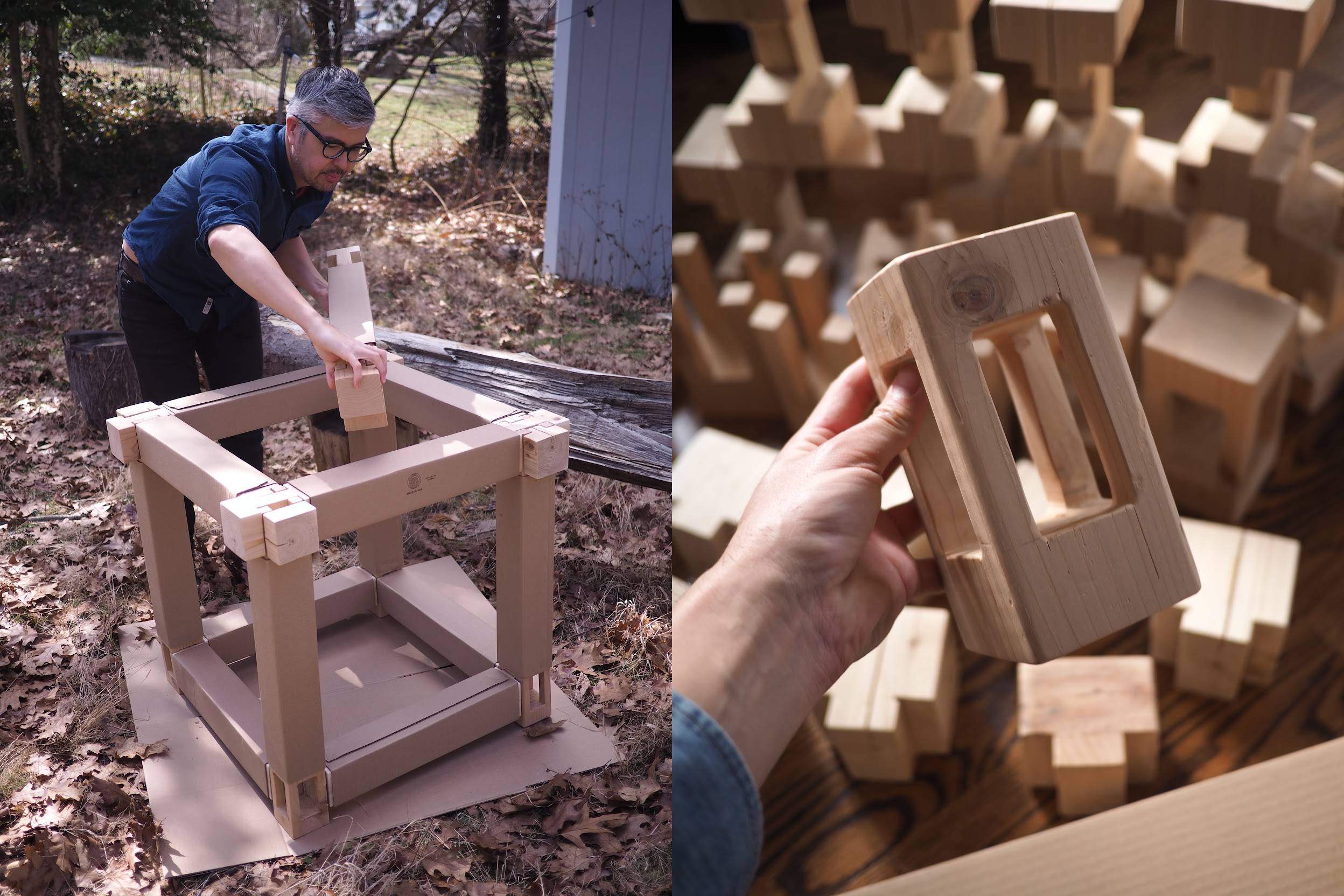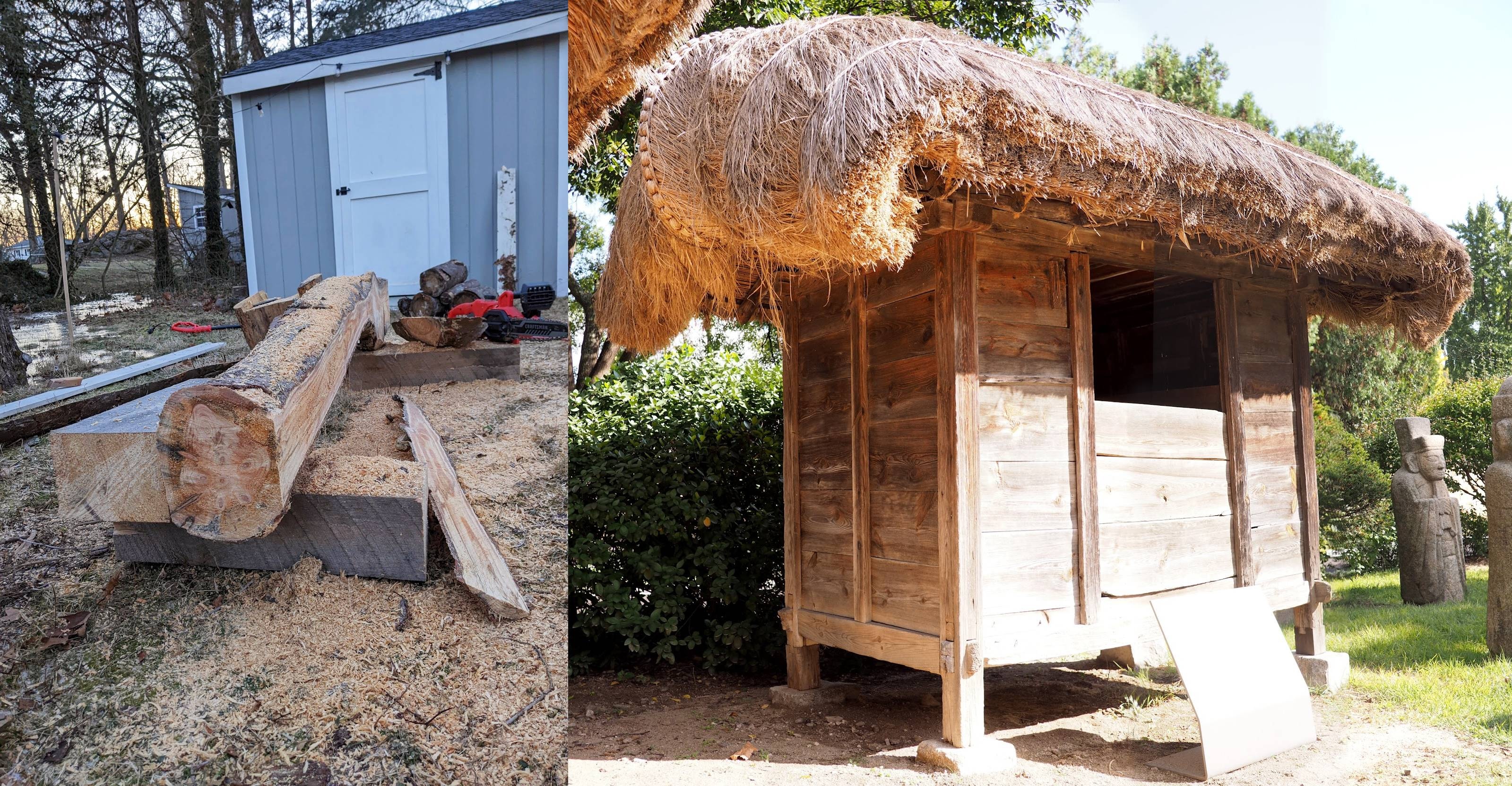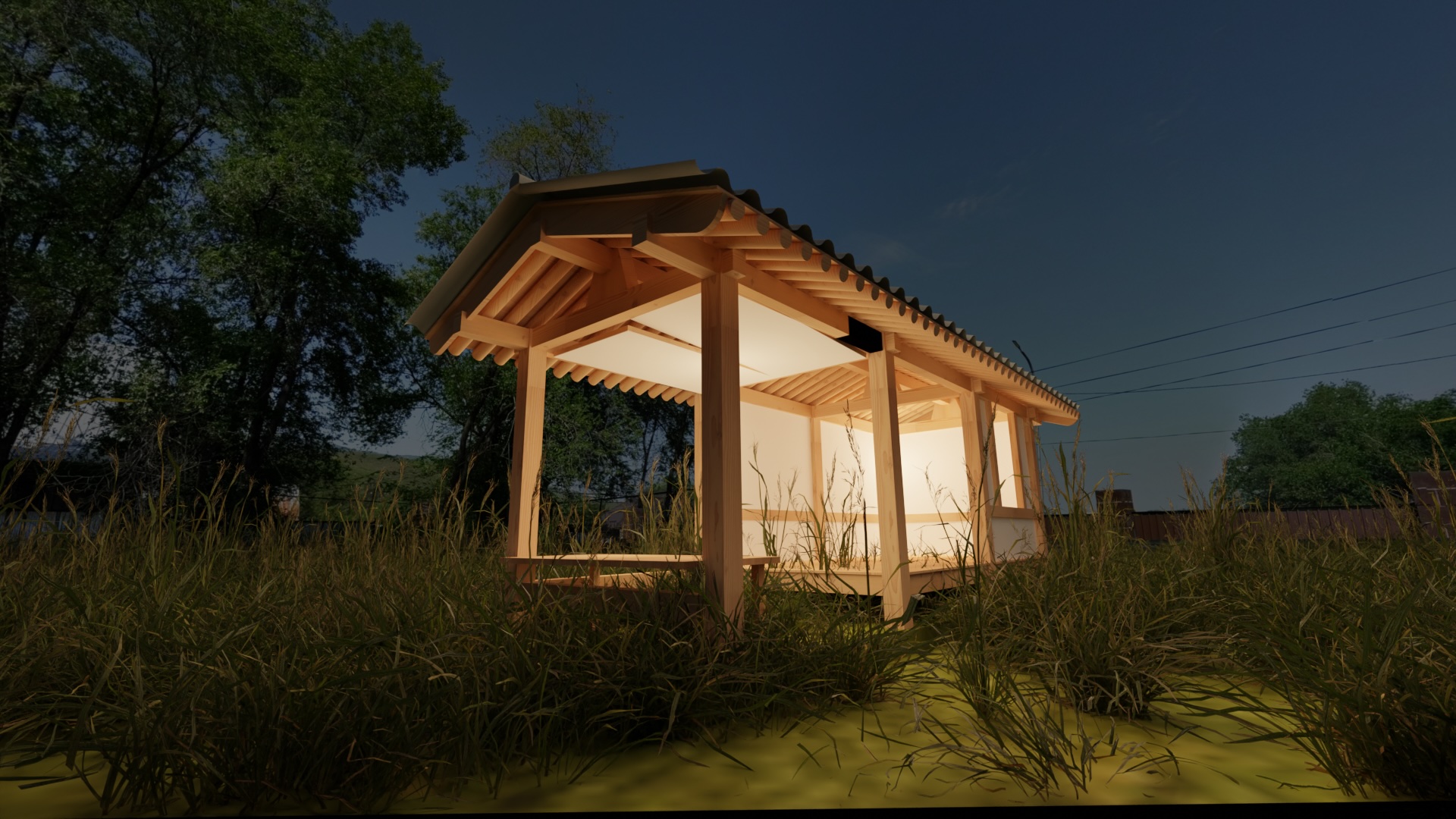Hanok Re-existencia
What can we learn about the worlds of our ancestors, and the textures and shapes of the lives they lived? Are their hopes and dreams still evident in the clues we find in archives and artifacts, despite decades or centuries of colonial distortion?
Since 2022, I have immersed myself in the woodworking knowledge of my ancestors, inspired by a learning journey about the home where my family lived in Hosan, on the Gohung peninsula in Korea. A 한옥 / hanok is a traditional Korean home, crafted from pine beams, clay plaster walls and paper windows and doors. My mother’s memories of that home, and the world she was part of, have led me to seek out and take up the skills and techniques of hanok construction, while reworking years of my own woodworking experiences. (And inspired as always by the re-existencia work of Kazakh artists Aisha Jandosova and Aida Issakhankyzy, the YA literature of Linda Sue Park.)

Coined by Adolfo Albán Achinte and described by Madina Tlostanova, re-existencia is “an active reworking of odors, tastes, colors and sounds of his/her ancestors and remaking of systematically negated forms of interactions with the world, of being and perception… a sensual response of resistance… in defiance to coloniality.”
My diasporic research journey has taken me through archives and stereographs, YouTube and Seoul AirBNBs, drawings and prototypes. I’ve learned to wield a chainsaw and sharpen a handplane. I’ve learned the Korean vocabulary of hanok components, and the ceremonies to protect its inhabitants.

I’m slowly building larger and larger hanoks, and beginning to build them with other Korean diasporic people. It is my dream to build a full size hanok which can be a space of peace and belonging for Korean people seeking re-connection, and to teach hanok construction as a part of my woodworking practice.
As I work towards that goal, I have begun to incorporate hanok timber joinery into my furniture making. Please reach out (or stay tuned on my Instagram) to learn more.

Jeffrey Yoo Warren is an artist, community scientist, illustrator, and researcher in Providence, Rhode Island.